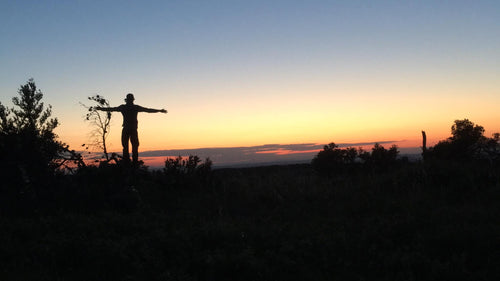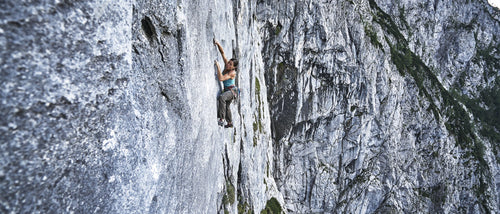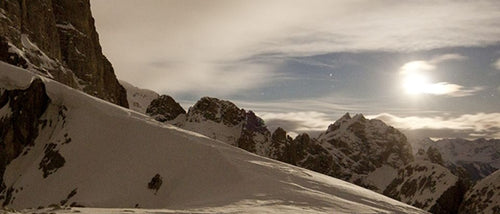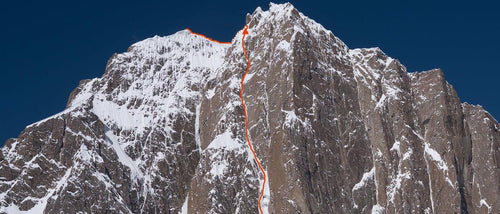The Best Long Distance Walks in Scotland

Scotland offers a beautiful collection of long-distance walks for you to choose from. In our guide, we’ve hand-picked four of the best long-distance walks that you’re certain to want to complete (and do again!).
We’ve included a range of distances so that there’s something for varying abilities, although the shortest walk is 44.5 miles, so LOWA's Trekking boots are going to come in very handy during these walks, to handle the extra distance and weight in your backpack.
The Great Glen Way – 117.5km/77m
Our first long-distance walk - The Great Glen Way - is one that stretches from coast to coast right across the Highlands. Along the way, it incorporates links to the main centres of Fort William as well as the regional capital of Inverness.
This route tracks the naturally occurring major faultline of the Great Glen. Along the way, you’ll find that the route largely steers away from to higher levels and serves up an enticing introduction to the Highlands and long-distance walking too.
In 2014, a higher-level route that exists between Fort Augustus and Drumnadrochit was introduced. This option provides additional awe-inspiring views that aren’t much harder to work for! The Great Glen Way gives you the chance to explore the entire lengths of Loch Lochy and Loch Oich while also incorporating the forests above Loch Ness and the towpath of the Caledonian Canal. This is a complete engineering delight from the work of Thomas Telford which links these lochs and creates a through route from the Western Seaboard to the Moray Firth.

Affric Kintail Way – 71km/44.5m
The Affric Kintail Way gives walking enthusiasts the opportunity to enjoy a wonderful cross-country route that stretches 44.5 miles from the start point in Drumnadrochit on Loch Ness all the way to Morvich in Kintail near Loch Duich. Due to this route’s proximity to the first route in our guide (The Great Glen Way - Inverness to Fort William), it’s entirely possible to make this walk longer if you wish. This is achieved by going from Drumnadrochit to Inverness and soaking up the remarkable coast to coast trek we touched on above.
The Affric Kintail Way is one that’s recommended for the more experienced hiker, so if you fall into that category, you can look forward to taking in a host of landscapes with magnificent views – a statement synonymous with many of Scotland’s walking trails. Meet ancient drove roads previously used to relocate cattle from the west coast to the market; experience the magnificent deep lochs, ancient woodlands, lofty glens and the Glen Affric National Nature Reserve.
This trail features more than 6,000 feet of ascent over its duration. Therefore, you might be tempted to book in at the Alltbeithe Youth Hostel if you’re looking for an overnight stay. This hostel boasts the accolade of being the most remote in the Highlands.
Be prepared with your clothing and footwear as this walk passes through some remote parts and the weather can change with little notice.
Cape Wrath Trail - 375km/233m
The Cape Wrath Trail is regularly referred to as Britain’s toughest walk. It’s a trail that gives walkers plenty of challenges but with those come the rewards! This exhilarating trail takes you through some of the wildest and most breath-taking sections that Scotland has to offer.
Established by photographer David Paterson, this particular trail lies unmarked and, therefore, needs walkers to have suitable navigational skills and experience.
The Cape Wrath Trail runs from Fort William to the most north-westerly point in all of mainland Britain, Cape Wrath. As we mentioned, because the route is unmarked, you are free to select a route that is unique for you.
So, if you want a walking challenge that falls into the class of ‘epic’, then this is the trail for you.
The John o' Groats Trail – 235km/146m
John o' Groats is a world-renowned start/finish point for the famous Lands End to John o’ Groats route because it encompasses the traversal of the whole length of Great Britain. The trail gives long-distances walkers another fine example of Scotland’s wild allure and when you embark on this trail from Inverness to John o' Groats, you’ll discover why. In fact, this route provides an essential missing link for Land's End to John o' Groats walking aficionados.
The route was initially devised by Jay Wilson; again, there’s no built path and it’s recommended that only experienced hikers attempt this route.
Did we mention that the route starts at the end of The Great Glen Way? Once you’re on the trail, you’ll find that it follows minor roads, pavements and occasionally some overgrown paths that allow you to cross the Black Isle and make your way to Alness before reaching Tain in Easter Ross. Once there, you’ll cross the firth to the beautiful small town of Dornoch.
The route transforms into a coastal walk at this point, embracing the outstanding clifftops as you go. Pass through Helmsdale, Dunbeath and Lybster en route for Wick, from where you’ll see the dramatic cliffs continue until arriving at the extensive sweep of Sinclair's Bay.
This location leads to Keiss, a place that comes complete with a resplendent clifftop finale leading to Duncansby Head – home to the most northeasterly point of the UK’s mainland. John o' Groats can be accessed by a short walk beyond Duncansby Head.

Hopefully, you’ve got some healthy inspiration from this guide and can start planning your trip to Scotland soon! What are your favourite routes in Scotland? Share your picks with our social media community!














